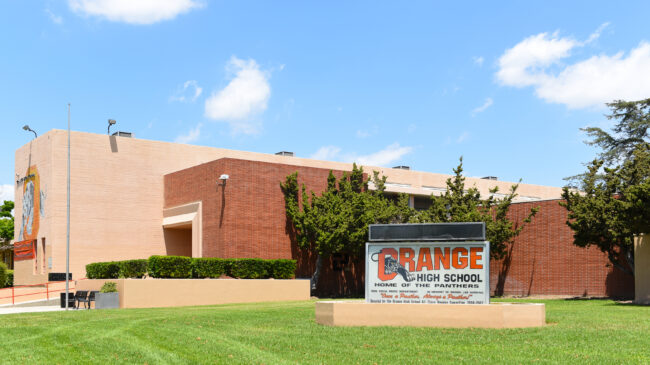In October, California Gov. Gavin Newsom signed several bills expanding universal pre-K, dual immersion language programs, and college savings accounts in the state. These initiatives are all part of a larger $123.9 billion legislative package, which will set a new record for education spending in California in a single year. Despite this record-high spending, some have continued to argue that California schools are among the most underfunded in the nation.
A closer look at the school finance data, however, shows that education spending in California has increased dramatically since the Great Recession. But there are several reasons why the state’s school districts may not be feeling these increases.
The effects of the 2008 Great Recession on education spending impacted many states and schools across the country for years after the initial market disruption. Nationwide, K-12 education spending dipped downward and stagnated until 2013. But from 2013 onward, K-12 spending rebounded back in many states, and in no state was this education spending increase more pronounced than California.
According to the latest data published by the U.S. Census Bureau, inflation-adjusted education spending in California grew by a massive 44.03% between 2013 and 2019—the fastest growth among any state in the nation including the District of Columbia during that period.
This massive increase is due largely to the adoption of California’s Local Control Funding Formula in 2013, an initiative that streamlined and improved the state’s previously inequitable and convoluted funding system and also included large new investments in K-12 education. In this six-year period after the new formula’s adoption, California went from being ranked 32nd in the nation in per-pupil K-12 spending to 17th.
So why are some California school districts still in fiscal distress?
There are several reasons why education spending increases in California haven’t appeared to be the boon for school district budgets that they should have been. First, there’s the issue of declining enrollment. According to a 2020 report from the Pubic Policy Institute of California, public school districts in 30 of the state’s counties saw enrollment declines from the 2008-09 school year to the 2018-19 school year. What’s more, these enrollment declines are projected to continue and they don’t even reflect the massive enrollment losses that have occurred during the COVID-19 pandemic.
States can increase education spending all they want and yet still see budget challenges if many of their school districts are facing declining enrollment. That’s because school districts struggle to downsize their budgets effectively, and when kids leave a school district so do their education funds.
The second major reason why California’s spending increases haven’t been strongly felt by school districts is escalating problems with the teacher pension system. As Reason Foundation’s pension experts Len Gilroy and Zachary Christensen wrote earlier this year, “CalSTRS [California State Teachers’ Retirement System] is currently only 66% funded and has $100 billion in unfunded benefits. The costs associated with paying off this pension debt are skyrocketing and siphoning hundreds of millions of dollars from classrooms each year.”
Census Bureau data corroborate this observation. From 2013 to 2019, inflation-adjusted spending on instructional benefits, which includes pension costs, increased by 81.3% in per-pupil terms and by $5.77 billion in absolute terms.
Data from the most recent school years haven’t been released by the Census Bureau yet, but updated data from the California Department of Education, and the fact that the state education system has also received a sizeable boost from federal stimulus dollars indicate that California has sustained the trend of increased education spending.
Before these funds can be used effectively, state and local public officials need to clean up existing problems and plan carefully for the future. School districts with declining enrollments should be right-sizing, not continuing to hire more staff. Policymakers also need to make a firm commitment to paying down public pension debt as quickly as possible and adopt meaningful pension reforms to stave off future debt loads.
While these fixes can’t happen overnight, kicking the can further down the road will only ensure that California’s future education investments won’t make it into classrooms and to the students that need them most.
A version of this column previously appeared in the Los Angeles Daily News.

